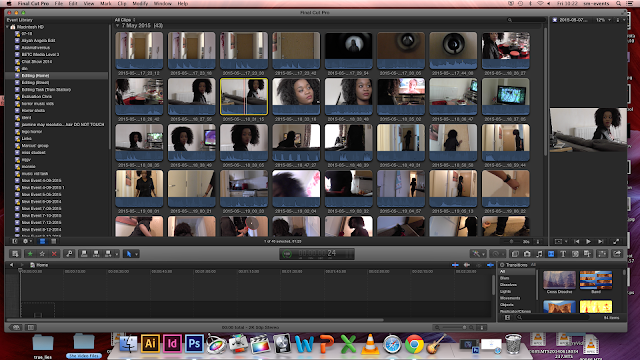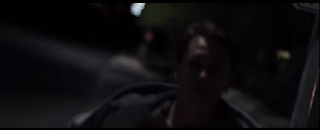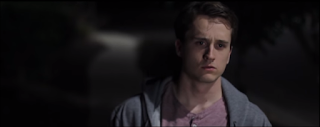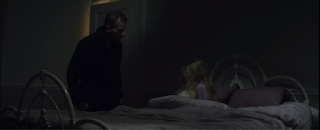With early cinema's editing, it has developed and influenced the modern period because continuity has become the dominant use of editing being used in the film industry rather than Montage. There is big difference between these two editing techniques as Continuity has become mainstream for audiences because it looks in the story and drama behind a film but also by keeping a sense of space and time plus an closed ending so the audience will know that the film will come to an end by using the linear narrative (Beginning, Middle and Ending) in meaning that, this style of editing is used to entertain the audience.
As for the Montage style's of editing, it is used to make the audience think about what is going on in the film and may become confusing for them because it is breaking continuity by the use of jump cuts and a open ending which means there would be cliff-hangers at the end of the films, the audience would not know if the film that was shown to them has ended but this made things harder for them to follow because it was done to create a artistic style by creating emotions within the film. This all started due to the fact that the Soviet Union and the USA were in a battle to become the dominant style of editing by which, they were represented by Griffith and Eisenstein. Today not only Continuity has become the dominant style of editing, it is still being used in the film industry because the audience does not have to think about what is going on in the film but there is some sign of Montage being used to make the film more interesting for the audience.
The techniques that is associated with Continuity are 180 degree rule, match on action, shot reverse shot, POV (Point of View), cutaway, cross cutting, seamless and motivated cut but the edits of this are not seen in the film. Montage and Discontinuity was also developed in the early cinema period to modern period to give a challenge to America's Continuity as it was starting to dominate the film industry but did start with Griffith where he went to make his most successful movie called Birth of the Nation in 1915 where it was deemed racist. D.W Griffith is the one who discover Continuity where he came across the 180-degree rule through trial and error as he wanted to see if would work well with the films he made but would also develop other techniques that were associated with Continuity.
Kuleshov and Eisenstein were making films for propaganda in Soviet Union.The theory of Montage (or known as the Kuleshov Effect) came around where Lev Kuleshov did a experiment where he took three shot of a man smiling, a close up of a gun and the man looking frightened but when it was shown to a audience, their reaction was that he is in fear of dying so he changed the shots, the audience had a different reaction to it as the shots was changed to create a different meaning which showed that his theory worked but Eisenstein would push this theory by being the first person to use it in his films. In Strike, he uses a same shot of the labourers cutting up in which killing a cow where this was showing that they were getting treated like animals but overall this was making the audience think of what is going on in the film and work out the meaning for themselves where in Continuity editing, the audience would not need to think of what is going on in a film because this style of editing is use to entertain them.
The Kuleshov Effect
Strike (Scene of the people cutting open killing a cow) by Eisenstein
Alfred Hitchcock was influenced by the work that Eisenstein put into his films which included the use of Montage techinque where he uses this in the film of Psycho that was released in 1960. In the scene where the unknown figure starts stabbing Marion Crane who is in the shower, the pace of each cuts starts to pick up due to the fact it was slow at first which this type of montage is called Rhythmic but the soundtrack of the music was getting louder mainly because it was showing the violent side of the sequences of the stabbing shots. After she was fully stabbed, there was a shot of the bath plug where it cross-dissolve to a close up and long take of Marion's right eye which it was showing that the bath plug had a dark hole which is showing that she is close to deaths after getting stabbed so many times.
Jean-Luc Goddard was one of most famous french citric-turned filmmakers who was influenced by the work that Hitchcock put into his films like Psycho and his use of the alternative technique of Montage which he considered an Auteur (Artist) but his own film of Breathless, he used a different technique to bring something different to audiences. That technique was the Jump Cut where it was first discovered by George Meiles where he used it his films of A Trip to the Moon and The Haunted Castle but Goddard would used this technique to create his own style so he would developed this more than Meiles did as he was using as a special effect. At the beginning of Breathless where one of the character is driving a stolen car until two Police Officers on Bikes start chasing him, he uses the Jump Cuts because he wanted to give America's Continuity a challenge as this editing technique was dominating the film industry and since Continuity was getting broken, there was another name was came up for breaking Continuity was called Discontinuity.
The Jump Cuts in the beginning of Breathless
Christopher Nolan is one of the contemporary directors who used discontinuous editing which he was portraying the narratives of non-linear and Multi-Stranded while bridging a gap between the visuals in the film and the story itself but also using the technique of Montage to make the audience think and understand about of what is going on in the film. As he was influenced by the auteur's (artist) predecessors of Continuity (Griffith), Montage (Kuleshov and Eisenstein) and Discontinuity (French New Wave) which he absorbed of the techniques that they developed in the past and created his own artistic style because the future directors will look to the past, modern and contemporary artists and use some of their styles in their own films that they will make.
In Batman: The Dark Knight where Batman interrogating the Joker about where is Harvey Dent and Rachel have disappeared. During the conversation between Batman and The Joker, there is a use of rhythmic editing when the cuts do start slowly but the pace starts to build up with the soundtrack so it creates tension for the audience but also there is a use of cross-cutting to show a different character's version of events when the Police Officer of James Gordon is running to the door as the events in the interview room starts to get heated.
Usually in his films, Nolan uses the editing style of Continuity so it keeps the audience entertained through the story that is being told in the film but in the film of Inception, Nolan uses the alternative technique of Montage that was developed from Kuleshov and Eisenstein would go on to use this theory in his films to make the audience think of what is going on in the film which Nolan did this by using flashbacks and flash-forwards so it makes the audience think of what is the story is trying to tell them with the characters as well.
In Batman: The Dark Knight where Batman interrogating the Joker about where is Harvey Dent and Rachel have disappeared. During the conversation between Batman and The Joker, there is a use of rhythmic editing when the cuts do start slowly but the pace starts to build up with the soundtrack so it creates tension for the audience but also there is a use of cross-cutting to show a different character's version of events when the Police Officer of James Gordon is running to the door as the events in the interview room starts to get heated.
Quentin Tarantino was another contemporary director who created his own mash ups from his favourite genres of films that he watched but he was also influenced by the auteur's (artist) predecessors of Continuity (Griffith) and Montage (Kuleshov and Eisenstein) which he absorbed these techniques that was developed in the early and modern cinema and created his own artistic style but this style was brought to Hollywood to show something new for the audiences who like watching new films so future directors would be able to look up to these directors that are from the past, modern and contemporary periods and use some of the styles that they used and put it into their own films.
The styles that Tarantino created can be seen in the film of Pulp Fiction where Mia overdoses after taking the wrong drug which Vincent administer an adrenaline shot to her heart where she is revived. During this, there is a use of rhythmic editing where the cuts starts to get quicker so it keeps the audience on the edge of their seats but he uses Continuity throughout it as well so it shows that Tarantino is influenced by DW Griffth's use of Continuity.
In the Kill Bill 2 where Bride is training with Master Pai Mei, he uses continuity editing but it does get broken when she is showing her sword skills as part of her training which Tarantino did on purpose to show that the film is staged or in other words: not real (not a true story) but there is a use of rhythmic editing which is part of Montage where the cuts of camera shots between Bride and Pai Mei starts to pick up pace with the soundtrack because the cuts at the beginning of the clip are slow at first.
In Inglorious Bastards, Quentin Tarantino shows his influence of using Continuity and Montage techniques in his films by combing both in this film to not only entertain the audience by using continuity throughout the film and also having the use rhythmic editing which is part of Montage to keep pace of the action happening in the film but in this clip of Sgt. Hugo Stiglitz, it is a montage sequence due to the fact that there is a flashback of who is this character by looking into their past which it did in this film because Tarantino wanted the audience to think who are the characters in the film.
Also in the film of Death-Proof which is coming toward the end, Tarantino was using the continuity methods that was developed by D.W Griffith as he was trying to stop the audience to stop thinking about the movie unlike Montage does this. In the chase scene in Death-Proof, he broke the 180-degree rule of Continuity which is creating discontinuity within the film and showing it is staged and not real at all. There is rhythmic editing to the chase scene as it is creating a fast scene between the shot changes that happens and make the audience feel entertained and do not feel boring at all.
Conclusion: The use of Contemporary editing is used to pass time without needing the audience to think about what is going on in the film so this became known as the Hollywood Montage because it was completing with the Soviet's Montage that Kuleshov and Eisenstein that they came up with and used in their films but Hollywood Montage was used to entertain the audience but there was the uses of Montage techniques like Rhythmic for example.











































